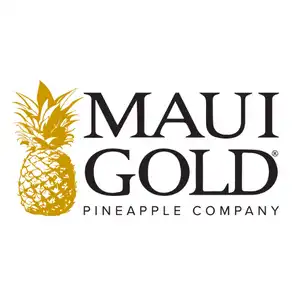New red algae species from Papahānaumokuākea named after conservation leader

A team of international scientists published the scientific description of a new species of red algae from Papahānaumokuākea Marine National Monument, and named it after conservation leader Laura Kalaukapu Thompson, who passed away in 2020 at age 95.
The new alga is named Croisettea kalaukapuae. Thompson’s Hawaiian middle name, Kalaukapu, was bestowed upon her by her grandmother and means “the sacred leaf.”
The new species was discovered by scientists using technical closed-circuit rebreathers to dive to extreme depths in excess of 300 feet. These deep coral reefs, also called Mesophotic Coral Ecosystems, are virtually unexplored, and host a wealth of undiscovered biodiversity.
NOAA research ecologist Dr. Randy Kosaki was the first to discover the new species in the Northwestern Hawaiian Islands during a 280-foot dive he said was “one of the darkest and coldest dives I’ve ever been on, with California-like water temperatures in the high 50s.”
Feresa Corazon P. Cabrera, the lead author of the paper and a University of Hawai‘i Ph.D. candidate, said: “Having been shaped by the same evolutionary pressures in these cold twilight depths, these red limu blades look similar to each other making it hard to initially classify them, so we relied on both morphological and molecular data to tell them apart.”
The full scientific paper, “Further studies on Hawaiian Kallymeniaceae (Rhodophyta) reveal pseudocryptic diversity in the genus Croisettea”, published in the journal Phycologia at phycologia.com.
“What a joy and honor to name a new species after a beloved kupuna who made strides for the community to arrive in the present, celebrating 2022 as the Year of the Limu [Polynesian term for edible plants living underwater],” Cabrera said.

Thompson was a founding member of the Reserve Advisory Council for the Northwestern Hawaiian Islands Coral Reef Ecosystem Reserve established in 2000 by President Bill Clinton. Her leadership on the council contributed to the high levels of protection established for Papahānaumokuākea when the Reserve was designated as a marine national monument by President George W. Bush in 2006.
Thompson also was a strong supporter of using Papahānaumokuākea as a place for the perpetuation of Native Hawaiian cultural practices. Beyond her work on behalf of Papahānaumokuākea, Thompson was an advocate for protecting all of the natural and cultural resources of Hawai‘i.
She was married to Myron “Pinky” Thompson, renowned social worker, former Bishop Estate trustee and former president of the Polynesian Voyaging Society. And, she was the mother to Lita Blankenfeld, Myron Thompson Jr. and master navigator Nainoa Thompson.
Thompson was affectionately called “Aunty Laura” by her friends and conservation colleagues.
“Given all of Aunty Laura’s contributions to the protection of Papahānaumokuākea, it seems especially fitting that a rare species from these kupuna islands will now carry her name in perpetuity,” Dr. Kosaki said.
The scientists also described three other new species of Hawaiian red algae for the first time. These species were given their formal scientific species epithets in ʻŌlelo Hawaiʻi (Hawaiian language) by the Papahānaumokuākea Native Hawaiian Cultural Working Group (CWG), which is coordinated by the Office of Hawaiian Affairs.
This is a continuation of the Cultural Working Group’s goal to name new species in an attempt to define and articulate a present-day relationship to elements and species within the Hawaiian universe, as a place-holder for future generations.
In honor of Skippy Hau, renowned long-time biologist on Maui with the State Department of Land and Natural Resources, one of these new species was named Croisettea haukoaweo. The deep reef species found more than 300 feet off Maui received the epithet haukoʻaweo in reference to “the vibrant limu entwined with pūkoʻakoʻa (Halimeda spp.) found in the cool deep waters.”
Hau is well-known for his lifelong dedication to saving Hawai‘i’s unique endemic stream fauna and his love for the ocean and his Maui community. Another two new species of algae were given the names pākualapa and ʻōhelouliuli.
Papahānaumokuākea is cooperatively managed to ensure ecological integrity and achieve strong, long-term protection and perpetuation of Northwestern Hawaiian Island ecosystems, Native Hawaiian culture and heritage resources for current and future generations.
Four co-trustees — the Department of Commerce, Department of the Interior, State of Hawai‘i and the Office of Hawaiian Affairs — protect this special place.
Papahānaumokuākea Marine National Monument was inscribed as the first mixed (natural and cultural) UNESCO World Heritage Site in the United States in July 2010. For more information, please visit www.papahanaumokuakea.gov.








